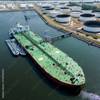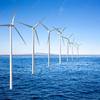DNV GL Calls for Action to Meet Paris Climate Target
DNV GL’s Energy Transition Outlook indicates global temperatures rise by 2.4⁰C by end of century. Energy experts identify a combination of technology measures to curb global warming which includes: Boost solar power more than 10 times to 5 TW, wind power by 5 times to 3 TW and increase battery production for EVs 50-fold by 2030.
DNV GL calls for extraordinary policy action to advance renewables, new decarbonization technologies and systems, electrical vehicles and energy efficiency.
The energy transition requires more than 10 times solar and 5 times wind power in combination with other technology measures to limit global warming to well below 2°C and meet the targets of the Paris Agreement, according to DNV GL’s latest Energy Transition Outlook: Power Supply and Use report.
The report finds that the energy transition is gathering pace more quickly than previously thought but the rate is still too slow to limit global temperatures rising by well below 2°C as set out in the Paris Agreement.
At the projected pace, DNV GL’s forecast indicates a world that is most likely to be 2.4°C warmer at the end of this century than in the immediate pre-industrial period. The technology already exists to curb emissions enough to hit the climate target. What is needed to ensure this happens are far-reaching policy decisions.
DNV GL’s report forecasts that by 2050 power generation from solar photovoltaic and wind energy will be 36,000 terawatt hours per year, more than 20 times today’s output. Greater China and India will have the largest share of solar energy by mid-century, with a 40% share of global installed PV capacity in China, followed by the Indian Subcontinent at 17%.
Globally, renewable energy will provide almost 80% of the world’s electricity by 2050 according to the report. The electrification will see increasing use of heat pumps, electric arc furnaces and an electric vehicle revolution, with 50% of all new cars sold in 2032 being electric vehicles.
Despite this rapid pace, the energy transition is not fast enough. DNV GL’s forecast indicates that, alarmingly, for a 1.5°C warming limit, the remaining carbon budget will be exhausted as early as 2028, with an overshoot of 770 Gt CO2 in 2050.













